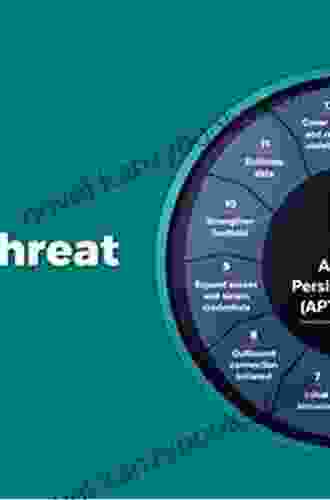Attribution of Advanced Persistent Threats: Unveil the Hidden Adversaries

Advanced persistent threats (APTs) are sophisticated cyberattacks that pose a significant threat to governments, businesses, and individuals worldwide. These attacks are carried out by highly skilled threat actors who employ stealthy tactics to gain access to and remain undetected within targeted networks for prolonged periods, exfiltrating sensitive information and causing significant damage.
Attribution, the process of identifying and linking cyberattacks to specific threat actors or groups, is critical for understanding the motivations and capabilities of these adversaries, enabling organizations to develop effective defense strategies and mitigate the risks posed by APTs. This comprehensive guide will delve into the complexities of APT attribution, providing in-depth coverage of techniques, best practices, and challenges involved in this critical aspect of cybersecurity.
4.5 out of 5
| Language | : | English |
| File size | : | 3831 KB |
| Text-to-Speech | : | Enabled |
| Screen Reader | : | Supported |
| Enhanced typesetting | : | Enabled |
| Word Wise | : | Enabled |
| Print length | : | 219 pages |
Techniques for APT Attribution
Attribution of APTs involves a multifaceted approach that combines technical analysis, intelligence gathering, and strategic assessments. Here are some key techniques employed in this process:
1. Malware Analysis
Malware is a common tool used by APTs to gain access to and compromise targeted systems. Analyzing malware samples can provide valuable insights into the capabilities and infrastructure used by threat actors. Researchers examine code structures, identify unique identifiers, and track malware families to uncover patterns and linkages to known APT groups.
2. Network Traffic Analysis
Network traffic analysis involves monitoring and examining network data to detect malicious activity and identify connections to known threat actors. By analyzing traffic patterns, security analysts can uncover communication channels used by APTs, track their movements within compromised networks, and identify their command-and-control servers.
3. Intrusion Detection and Forensics
Intrusion detection systems (IDS) and forensic analysis play a crucial role in detecting and investigating APT attacks. IDS can alert security teams to suspicious activities, while forensic analysis helps uncover evidence of breaches, identify the techniques used by threat actors, and gather intelligence for attribution purposes.
4. Open-Source Intelligence (OSINT)
OSINT involves gathering and analyzing publicly available information from sources such as social media, forums, and threat intelligence reports. This information can provide valuable insights into the activities, motivations, and infrastructure used by APT groups, aiding in attribution efforts.
5. Collaboration and Information Sharing
Collaboration among cybersecurity researchers, law enforcement agencies, and threat intelligence providers is essential for effective APT attribution. Sharing information, threat indicators, and best practices enables a collective understanding of the threat landscape and facilitates the identification and tracking of APT groups.
Best Practices for APT Attribution
To ensure accurate and effective APT attribution, it is essential to adhere to best practices:
1. Use a Multidisciplinary Approach
APT attribution requires a combination of technical analysis, intelligence gathering, and strategic assessments. By leveraging diverse expertise and perspectives, organizations can increase the accuracy and reliability of their attribution efforts.
2. Maintain Persistence
APT groups often employ sophisticated tactics to avoid detection and attribution. It is essential to maintain persistent monitoring and analysis efforts to uncover evidence and track the evolution of APT activities over time.
3. Leverage Attribution Frameworks
Established attribution frameworks, such as the "MITRE ATT&CK Matrix," provide a structured approach for analyzing and categorizing APT techniques. Utilizing these frameworks enhances consistency and facilitates collaboration among different organizations.
4. Seek External Expertise
When necessary, organizations should seek the assistance of external experts, such as cybersecurity consultancies or law enforcement agencies, to provide specialized knowledge and support for complex APT attribution cases.
Challenges in APT Attribution
Despite advances in attribution techniques, challenges remain:
1. Lack of Definitive Evidence
APT groups often operate with a high degree of stealth and employ tactics to conceal their identities. As a result, definitive evidence directly linking them to specific attacks can be difficult to obtain.
2. Attribution Gap
The attribution gap refers to the disparity between the number of APT attacks and the number of cases where attribution is successfully achieved. This gap highlights the need for ongoing research and development of innovative attribution techniques.
3. Geopolitical Considerations
Geopolitical factors can influence attribution efforts. Governments may be reluctant to publicly attribute attacks to state-sponsored threat actors due to diplomatic or national security concerns.
Attribution of advanced persistent threats is a complex and critical aspect of cybersecurity. By understanding the techniques, best practices, and challenges involved in this process, organizations can effectively identify and track APT actors, mitigate the risks they pose, and build a more secure cyberspace. Collaboration, information sharing, and continuous research are vital to
4.5 out of 5
| Language | : | English |
| File size | : | 3831 KB |
| Text-to-Speech | : | Enabled |
| Screen Reader | : | Supported |
| Enhanced typesetting | : | Enabled |
| Word Wise | : | Enabled |
| Print length | : | 219 pages |
Do you want to contribute by writing guest posts on this blog?
Please contact us and send us a resume of previous articles that you have written.
 Book
Book Novel
Novel Page
Page Chapter
Chapter Text
Text Story
Story Genre
Genre Reader
Reader Library
Library Paperback
Paperback E-book
E-book Magazine
Magazine Newspaper
Newspaper Paragraph
Paragraph Sentence
Sentence Bookmark
Bookmark Shelf
Shelf Glossary
Glossary Bibliography
Bibliography Foreword
Foreword Preface
Preface Synopsis
Synopsis Annotation
Annotation Footnote
Footnote Manuscript
Manuscript Scroll
Scroll Codex
Codex Tome
Tome Bestseller
Bestseller Classics
Classics Library card
Library card Narrative
Narrative Biography
Biography Autobiography
Autobiography Memoir
Memoir Reference
Reference Encyclopedia
Encyclopedia Simon Gikandi
Simon Gikandi Robert Toporek
Robert Toporek Samara Kaufmann Aviv
Samara Kaufmann Aviv Susan Chan
Susan Chan Troy Anthony Platt
Troy Anthony Platt Jorge Castillo
Jorge Castillo Ray Crawford
Ray Crawford Sandy Feldstein
Sandy Feldstein Selina Wood
Selina Wood Stewart Cubley
Stewart Cubley Ramsey Dukes
Ramsey Dukes Robert Elliott Smith
Robert Elliott Smith Samantha Stone
Samantha Stone Planet Health And Taste
Planet Health And Taste Sophia Mason
Sophia Mason Riccardo Ninno
Riccardo Ninno Richard Green
Richard Green William A Wade
William A Wade Starhawk
Starhawk Roxanne Crouse
Roxanne Crouse
Light bulbAdvertise smarter! Our strategic ad space ensures maximum exposure. Reserve your spot today!

 Ralph EllisonThe Inner Chapters Hackett Classics: A Journey into the Depths of Ancient...
Ralph EllisonThe Inner Chapters Hackett Classics: A Journey into the Depths of Ancient...
 Herman MelvilleThe Gluten Free Gut Health Plan And Cookbook For Beginners: Your Journey to...
Herman MelvilleThe Gluten Free Gut Health Plan And Cookbook For Beginners: Your Journey to... Ervin BellFollow ·7.9k
Ervin BellFollow ·7.9k Jimmy ButlerFollow ·14.6k
Jimmy ButlerFollow ·14.6k Colt SimmonsFollow ·10.4k
Colt SimmonsFollow ·10.4k Robin PowellFollow ·6.3k
Robin PowellFollow ·6.3k H.G. WellsFollow ·7.4k
H.G. WellsFollow ·7.4k Alan TurnerFollow ·19k
Alan TurnerFollow ·19k DeShawn PowellFollow ·5.5k
DeShawn PowellFollow ·5.5k Grayson BellFollow ·18k
Grayson BellFollow ·18k

 Charles Dickens
Charles DickensBolting From Cystic Fibrosis: A Journey of Triumph Over...
When I was born,...

 Thomas Mann
Thomas MannIndulge in Culinary Delights: Your Comprehensive Guide to...
Embark on a gastronomic journey with our...

 Tim Reed
Tim ReedIndulge in the Enchanting Flavors of Sara Foster Southern...
Welcome to the...

 Jamie Blair
Jamie BlairKickstart Your Future Health and Happiness Right Now: The...
Embark on a Journey to...

 Ben Hayes
Ben HayesSavor the Southern Charm with "The Southern Living...
Prepare to embark on a culinary journey...
4.5 out of 5
| Language | : | English |
| File size | : | 3831 KB |
| Text-to-Speech | : | Enabled |
| Screen Reader | : | Supported |
| Enhanced typesetting | : | Enabled |
| Word Wise | : | Enabled |
| Print length | : | 219 pages |










